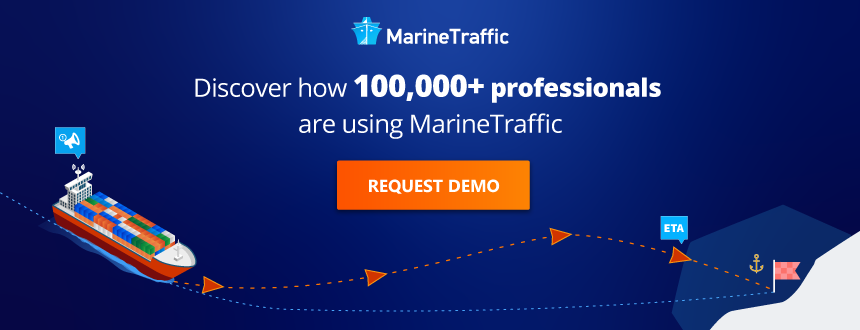
[ad_1]
Density Map of global shipping 2020 Source: MarineTraffic
Singapore has been identified as the top global shipping centre for 2020 by the recently published Xinhua-Baltic International Shipping Centre Development Index. It is the eighth consecutive year that Singapore has emerged in the top spot, and its success is attributed to the size of its port, and the number of internationally focussed shipbrokers, financiers, lawyers and insurers based there. This, as well as its supportive government policies, said the Baltic Exchange in a statement.
The index offers an independent ranking of locations across the globe that provide professional services to the industry. It is published by Chinese news agency, Xinhua, and global maritime data provider, the Baltic Exchange.
MarineTraffic contributed some data-led insight to the report.
“The report is based on analysis drawn from numerous independent datasets and offers an impartial view of the merits of the world’s leading maritime centres,” said Mark Jackson, chief executive of the Baltic Exchange.
The impacts of the global pandemic may have affected supply chains and business, but it has not affected the rankings of the next four leading maritime centres. The index identified “London, Shanghai, Hong Kong and Dubai were the next four strongest centres, as they were the prior year,” said the Baltic’s statement.
Other significant findings in the report reveal that Ningbo, China, replaced Tokyo, Japan, in the top 10, with Asia occupying three of the top five spots with Hong Kong coming in at number five. New York/ New Jersey sat comfortably at number nine as it has done for the past two years.
Singapore and London take the top spots
The report acknowledged many of Singapore’s strengths as a shipping centre, and highlighted its support of technological advances, safety, nurturing young talent, supply chain integration, favourable business environment and environmental focus. It also drew attention to its work for seafarers noting that it was active in protecting “seafarers caught up in the crew change crisis resulting from the Covid-19 pandemic”.
Related: Seafarer vaccination push must remain key priority for policy makers
London, meanwhile, continues to hold its own in second place, moving one place up from 2019, and the report notes that its “legal framework, experience, timezone, language and proximity to a huge financial hub” have not been impacted by Brexit.
The report states: “While it has continually built on its position as a world leader of maritime professional business services, its geographical location means that it lags Singapore in terms of port volumes and does not have the shipowner presence that other top ten shipping hubs have.”
According to MarineTraffic data, 3080 vessels called at its Thames and Tilbury terminals in 2020.
Dry bulk

The report also gives an overview of how Drewry Shipping Consultants sees the short term development of the container, dry bulk and oil tanker markets. Group managing director Nigel Gardiner notes that the dry bulk market is “recovering sharply”, with market weakness and uncertainty over compliant fuels keeping “the lid on new ordering”.
The report says: “From a demand perspective, iron ore trade on the long-haul Brazil-China route is growing, in part because of the ongoing political dispute between Australia and China. But bauxite trade between Guinea-China is also expanding and these two trades alone are lifting demand for Capesize/VLOCs. Elsewhere, growing coal imports by India and other southeast Asian countries are leading to increased demand for Panamax and Supramax vessels. In short, the groundwork is being laid for a sustained market recovery and freight rates are expected to be on an upward curve in the remainder of 2021 and well into 2022.”
Containers

On container shipping, Gardiner says the “market has never been so buoyant”.
“The two sure indicators of the heat in the sector are the pace of new contracting and the rapid escalation in freight rates,” he wrote in the report. He asserts that the 2H2020 hike in rates was due to two “temporary factors; A demand surge caused by a pandemic-driven shift in consumption habits towards goods; Supply chain disruption that reduced port productivity and restricted capacity from the market.”
He believes, however, that these circumstances will pass and that it is Drewry’s view that 2021-22 will likely be “very profitable for liner carriers. …That said, port congestion and container equipment shortages are expected to remain an unwanted feature throughout the remainder of 2021. This will further restrict the amount of effective capacity available to the market and lead to substantially higher average spot and contract freight rates.”
Related: Get access to powerful resources for logistics and supply chain professionals
Oil tankers

The IEA (International Energy Agency) has recently revised its forecast for oil demand growth in 2021 upwards by 230,000 bpd to 5.7 million bpd, notes Gardiner. “However, it still expects global oil demand to remain below 2019 levels at least until 2023, with the obvious knock-on implications for seaborne trade and demand for tanker shipping,” he says. Noting that much will depend on the pandemic, he sees a ”generally more positive outlook for oil demand” and that “the tanker market can be expected to stage a gradual recovery from recent lows with improvements in refinery runs and seaborne trade volumes occurring in 2H21 and with further gains to be seen in 2022.”
The order book for crude and products is just over 8% of the world fleet. New deliveries to the fleet, said Gardiner “will be capped in the next couple of years, although it has to be recognised that the ongoing weakness in current scrapping activity is a threat to the rebalancing of the market.”
The new MarineTraffic Density Maps will be available soon. Stay tuned.

[ad_2]